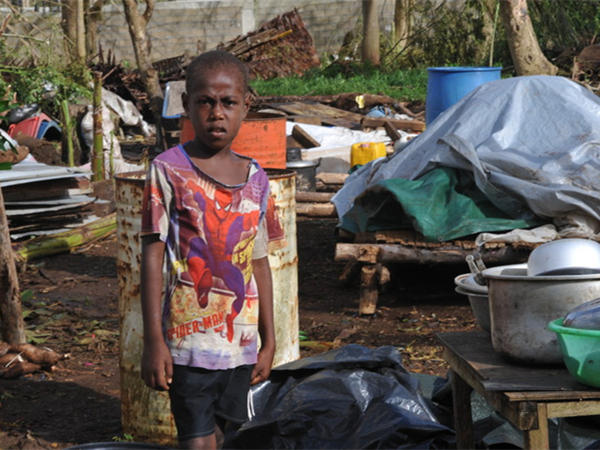Oxfam: Over 250,000 people at risk in Vanuatu
chinagate.cn, March 19, 2015 Adjust font size:
|
 |
|
More than 250,000 people are at risk, after Cyclone Pam made a direct hit on Vanuatu on 14 March, tearing through the archipelago with winds of up to 250kmh. Oxfam already has a team on the ground and more humanitarian emergency responders are flying to Vanuatu. [Photo provided by Oxfam] |
More than 250,000 people are at risk, after Cyclone Pam made a direct hit on Vanuatu on 14 March, tearing through the archipelago with winds of up to 250kmh. Oxfam already has a team on the ground and more humanitarian emergency responders are flying to Vanuatu, as the unconfirmed death toll in the small archipelago begins to climb and worse than worst case scenario unfolds.
Oxfam Country Director in Port Vila, Colin Collet van Rooyen, said the situation in Vanuatu was increasingly grim: ‘There are more than 100,000 people likely homeless, more than 90 per cent of houses damaged in Port Vila alone, nearly every school destroyed, full evacuation centres, damage to health facilities and the morgue.’
‘Reports today of catastrophic devastation in Erromango and Tanna Islands in the south with non concrete buildings completely flattened and the few concrete buildings without roofs confirm that there are still many, many people in need across the archipelago.
‘The Australian and New Zealand aid that is beginning to arrive now is very welcome, but of course we will need much more,’ he said.
Oxfam’s initial rough assessments at evacuation centres in Port Vila identified that clean water, sanitation and hygiene supplies are a major issue for those left homeless and those in evacuation centres, where there simply are not enough toilets or clean water for the amount of people in those facilities.
Oxfam has now launched an appeal to help the many thousands of people affected by the devastating cyclone. Oxfam Hong Kong is backing this appeal with a target to raise HK$1 million to support disaster relief work.
With more than 250,000 people at risk from the severe tropical cyclone there is real concern of a potentially high death toll and of enormous destruction, particularly given the traditional housing that is so prevalent through the islands. Grave fears were held for those people on the outer islands with little or no protection from the 250kmh winds.
Port Vila was recently named in the Natural Hazards Risk Atlas and is known as the city most exposed to natural disasters in the world because it faces a combination of risks including earthquakes, tsunamis, flooding and tropical cyclones such as Cyclone Pam.